Fuji XPro1 : Best Travel Camera Ever – Abandoned Building Shoot

Fuji XPro1. A lot has been said online about this remarkable and opinion polarising camera. I will cut to the chase right now – if you’re looking for the best travel camera available in 2012, this is it. My opinion is considered and well thought out. I’ve traveled, mostly overland, and photographed twenty-five countries since 2010.
I’ve shot and traveled with many different camera’s, but the Fuji XPro1 outshines them all. Hands down. So much so, that I recently sold my Nikon DSLR system. My travel camera kit now consists solely of the Fuji XPro1, with just a single lens. This is easily the best travel camera combo I have ever had the pleasure to use.
The Fuji Xpro1 – A Decision Years in the Making?
My opinion on what makes the Fuji XPro1 the best travel camera has been years in the making. The last time I travelled at length was for six months straight during 2010. I crossed three continents. I packed my Nikon DSLR and three lenses. A wide-angle, a fixed large aperture “standard” focal length lens, and a telephoto zoom. With a flash, and a few other accessories.
For my style of photography – predominantly street, with some landscape and general travel documentary work – the zoom wasn’t essential, and it barely got a look in. The wide-angle got a hell of work-out, it always was my favourite. As far as DSLR’s go, it was a reasonably compact travel kit. Importantly, a camera kit for all situations was essential. This seemed to fit the bill.
Plain and simple – if you travel a lot, a DSLR will become a pain in the ass to lug around. Due to the nature of some of the countries I have visited, and plan to visit in 2012, I use a nondescript day pack – not a specialised camera bag – to hold my camera gear. With the DSLR body, a flash, at least two lenses, and accessories, the small pack was bursting at the seams. Throw in a laptop, a drink bottle, and all the things you need for a day out in an unknown place, and well, it was just too much.
So, whilst on the road in 2010, I decided to search for a smaller alternative to the Nikon. However – until recently – no compact camera could come close to meeting the photographic quality of a DSLR. My decision was to go analog, purchase a Leica M6 with a some of that fine Leica glass, and get back to film.
Within a couple of weeks, I had sent all of the Nikon gear back home, so sure that I had made the right decision with the Leica. This wasn’t taken lightly – I had at least another four and a half months of travel ahead of me at this point. I had firmly set up camp on the film side, there was no turning back.
It was a revelation. Being able to throw on a tiny lens, take photos of unsurpassable quality, all with a system barely larger than a compact camera, elevated the film Leica above the DSLR Nikon system in my opinion.
Film Vs Digital – Are We Still Debating This in 2012?
There certainly was more than one occasion where I would have enjoyed the instant-ness of digital. The benefits of digital, especially for a blogger/photographer, are undeniable. But, my analogue to digital workflow worked out acceptably – for the rest of the journey, not once did I wish I had the Nikon. Being able to easily take my almost-pocket-able Leica everywhere, and being happy to do so, far exceeded any benefits of digital.
Not that I had a huge choice. The only digital alternative to the Leica M6 – in 2010 – was a Leica M9 (yes, this is up for debate). A rarefied camera indeed, with an eye-watering price. At the time, you wouldn’t have got change out of ten thousand dollars for the body, and an entry-level lens. To my eye, the images from an M9 exceeded the quality of any DSLR available. And, importantly, it was all in a compact package. Perfect for travellers, apart from the price. It just wasn’t going to happen.
The Fuji XPro1 – Released to an Eager Audience in Early 2012
Cut to 2012. Before I left to travel for twelve months this year, a question that recurs often in my life was again occupying my time. What camera/system do I take this time? After a few film-related mishaps in October last year, I was starting to think film was just too difficult for a travel blogger. It is 2012 after all, perhaps it was time to re-evaluate digital. Or maybe, hold my breath, buy an M9, and just eat carrots and two-minute noodles for a few months.
It wouldn’t be necessary. The Fuji Xpro1 had arrived.
Compact, interchangeable lenses, and a functional layout almost identical to the Leica. This was surely an enthusiasts travel camera. After reading a few reviews, I bought one of the first available Fuji X-Pro 1’s in my country. For the next month or so, I gave it a hammering. If it didn’t meet my requirements, or live up to my expectations, I was more than willing to re-sell it, and go back to the film Leica one more time. At this point, I still owned the Nikon system, and I could always use that if need-be.
Travelling Day-To-Day With the Fuji Xpro1
A month in to the journey, and I can affirm that the Fuji XPro1 is the best travel camera in existence today. The image quality is remarkable. Fuji sure know colour. In reality, the resolution and crispness exceeds most camera’s on the market – including many full frame (and bulky) DSLR’s. Usability is almost flawless – Fuji, if you’re listening, move the position of the Q button – it’s a great feature, but in the way.
Battery life has been pleasantly surprising. I bought a spare battery just in case. However, even in situations where I have been camping, with no access to electricity – which has been a lot over the last few weeks – I can get a few good days shooting out of two batteries. I was worried about the lack of weather sealing, but after a trek to a glacier in the rain, those fears have been allayed. A little bit of water is no problem for the Fuji XPro1.
Is there such a thing as a camera that you become intimate with? After a few missed focus shots, especially with my work on the street, I was concerned. But, almost magically, a few months after I started using the XPro1, almost every shot is focusing where I want it to be.
Don’t believe what you read about the autofocus in low-light. The Fuji focuses just fine, even in low light. The supposed AF issue must be one of those internet memes that has somehow turned myth into fact. Sure, there must be an example of a style of photography that requires exemplary low-light ultra-fast focusing performance at all times, but given the capabilities of the Xpro1, I’m struggling to think of such an example.
One of my pastimes is urban exploration – urbex. The photos on this page are from an abandoned government building in the South Island of New Zealand. In this case, it’s a perfect demonstration of the camera – in a dimly lit situation, the Fuji Xpro1 has no problem focusing. No problem, at all.
Urbex is a punishing and tricky environment for a photographer. You need to move light and fast. It can be a serious impediment lugging around a DSLR and flash. Most of these photos were taken at ISO 800 or above on the Xpro1. I find that up until 1600 is no problem at all – and dependent upon other factors, ISO 2500, 3200, and occasionally even 6400, produces acceptable results.
I’ll be travelling with the Fuji XPro1 for the next 11 months.
Unless somebody gives me a Leica M10 when they are released. Which reminds me – I left the Leica M6 at home. Every photo you see on this site, until further notice, will have come from the Fuji X-Pro 1. All, with the 18mm (28mm full frame equivalent) lens that many would have you believe isn’t up to scratch. Judge for yourself.
I may pick up the zoom lens when it becomes available later this year. And perhaps a wide-angle, when released. Even with three lenses, the system will be half the size and weight of the Nikon, with superior image quality. For the moment, on this site, it’s all just one camera, one lens, one focal length. I like to travel light.
No, the Fuji XPro1 is not without flaws. It isn’t perfect.
However, in my opinion, it’s the best travel camera available in 2012, at any price.
About the photos:
An abandoned building in the chilly South Island of New Zealand is a work out for any camera. If you’ve done any urbex, you know what I mean. Dark and dangerous. Without the high ISO performance of the Fuji, and the (almost) perfect ergonomics, I just wouldn’t have got this many usable shots in such a short period of time. I think it perfectly demonstrates what a great travel camera the Fuji XPro1 is.
Nate.
PS, nobody is paying me anything, or giving me anything, to write about the Fuji XPro1. This article is just a travelling photographers considered personal opinion.

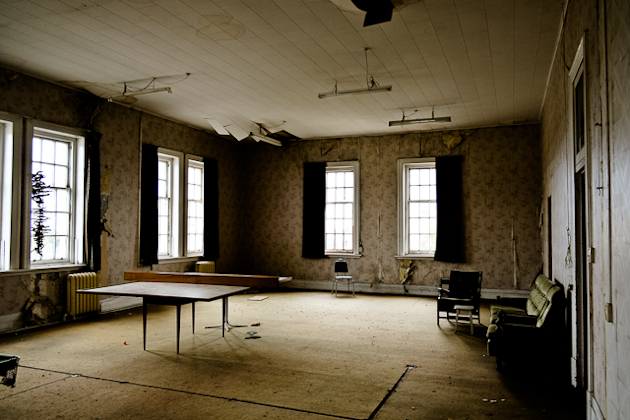
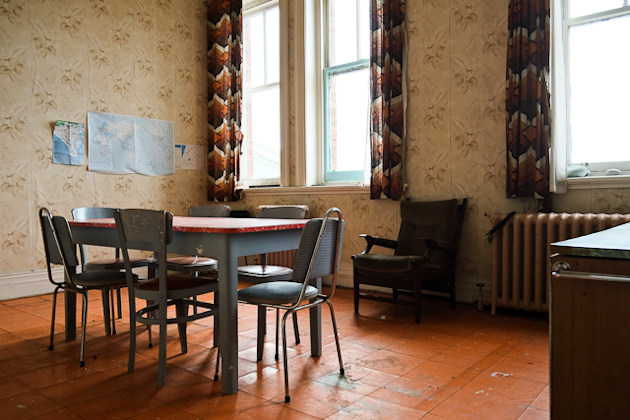

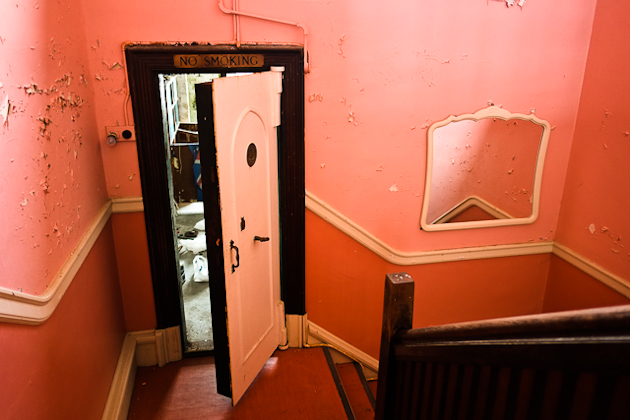

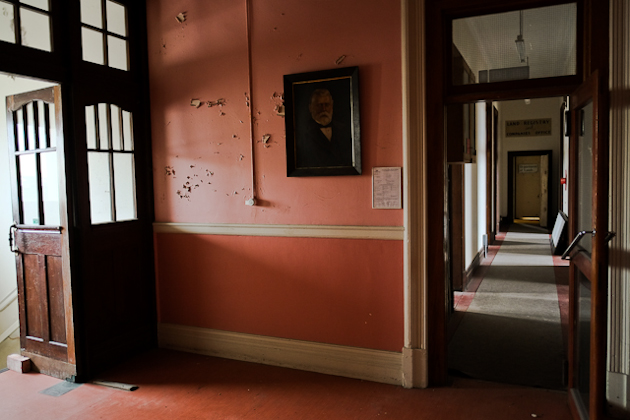




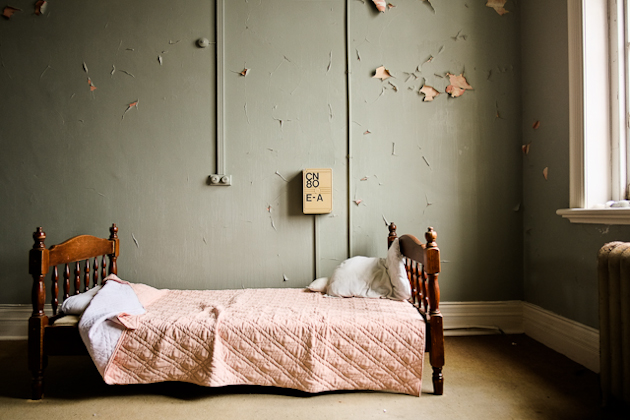
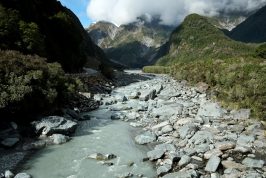


Hi, this is amazing review. Life with this camera, i search for more time user opinion, not a simple technical opinion, but emotional like this.
I have x1 pro since the first day lunch, i sell other dsrl we have, nikon, canon. I love it.
Your shot is fantastic.
that setting did you use? For the post how you did it? the colors of your photos are fascinating.
congratulations
Alessandro , X1 fan from Italy
Ciao
Thanks Alessandro. I think I will make the next Fuji post more “tech” related, and explain some of my methods and settings. Stay tuned.
Nice notice. Thanks Nate
Hi Nate , i’m impatience to read your method and settings use for these images. Ho many time estimated to post it?
Thanks again
Ale
Hey Alessandro! Thanks for your interest, I am travelling at the moment, but will have an article up soon.
Hi Nate, I stumbled on this fabulous site / adventure of yours and lost a night of sleep wandering around. I really like your pictures and since I bought a X-E1 a week ago, I’m eager to learn from well seasoned photographers like you. What are your camera settings? How do you post process, if at all? Any tips and tricks?
You mentioned writing an article about this stuff, but I can’t find it anywhere… Maybe you have a draft somewhere waiting to get published? :-)
Anyway, I have you bookmarked and will come back a lot to read, look, and be amazed!
Hey Gilles, I never got around to writing an article… but I have been working on a book. Stay tuned…
And glad to have you onboard! Good luck with your X-E1 – what a great camera.
Nate, great and captivating shots. I have the xpro1 myself and am still stunned by, indeed the polarizing effect this camera has. I have rarely issues with the focussing or anything else. To each their own, the number of blogs created by people who do not even own the camera is overwhelming, but you never see the proof of their unhappiness.
Again, great article and great shots.
Really appreciate the compliments Dennis. I too find it strange that people would blog about about a camera they don’t have experience with!
Nate
nice review…………….and I could not agree more…………….my Nikon gear is gathering dust since I purchased this beauty………with one lens………the 35mm. It has exceeded my expectations and continues to delight,
regards
Aidan
Hi Aiden, the images from the 35mm seem absolutely incredible. It’s not a focal length I often use, which is the only reason I haven’t purchased that lens. If I did buy it, it may collect dust in the same way your Nikon gear does ;)
Hi Nate,
I swear that the pics keep getting better on this site. I keep getting confused between xpro1 and x100 as I keep hearing lots about both. I’m sticking with my little Ricoh GRD3 for now and learning how to get the best out of it but really enjoyed the review. I became aware of Urbex a few months ago and find the images really beautiful so glad to see some here. Looking forward to seeing/ hearing more from your epic adventure.
Hi Iesha! Always love hearing from you. Thanks for the compliment, it means a lot – you have a great photographic eye. There’s bound to be more urbex articles on here, and I’m glad you enjoyed the review. Stick with the Ricoh, and get to know it inside-out, is my advice – you’ll get great results, it’s a nice camera!
Ah, the Fuji XPro1. For my next camera it’s still one the options. This one or the as fantastic Olympus OM-D 5. Or the coming GH3 (cause I really want to get better in video)
As you I’ve got rid of my DSLR, three years ago. I just couldn’t be bothered anymore with the bulk and size and the ‘shall I take my Nikon with me for dinner, nah, too much effort’, and so I bought me a m4/3, the Panasonic GF1. Never looked back.
By now I have a decent set of fixed lenses (nothing against zooms but they just don’t work with me), fast, small, perfect.
Also, if someone is still in for a superb point and shoot get the Sony RX100. Love this baby to bits.
Hey Conrad… yes, I should mention, the Fuji isn’t a camera for video, at all! OM-D is my second choice for a travel camera – it’s a fantastic machine.
The GF1 is great! My girlfriend has a GF3 (not as user friendly as the GF1) – for such a compact and inexpensive camera, I’m amazed at the image quality. Interesting about the RX100, I’m hearing good things. If you come back and read this comment, fill us in on the high ISO ability of the Sony…?
Totally agree with you and love the shots! All hand held? I shoot abandoned buildings with the camera on a tripod most times. Long exposures at ISO 200 (wish the Fuji would do 100 in raw).
Thanks Jeremy, appreciate the compliments. All hand-held, most are probably at ISO 800 (some 400’s, and a few 2500’s). Urbex without a tripod is such a relief, and it’s thanks to the incredible high ISO ability of the Fuji Xpro1. I also wonder why ISO 100 in raw isn’t possible, this seems to be (unfortunately) increasingly common in the world of modern cameras.
Love the photos, they look great! I’ve always liked urban decay, I think it’s visually fascinating.
Just a question, why did the X-Pro1 beat out the OM-D as your choice for a travel camera? Is your choice based solely on image quality, or is it a more intangible quality? I have an OM-D and have used the X-Pro1 and I find the OM-D functionally superior in almost every respect, not to mention much smaller and less expensive. When we were prepping for our trip my two choices for cameras came down to either the X-Pro1 or the OM-D, and after handing the X-Pro1 I’m very glad I chose the OM-D, though the X-Pro1 did come in a close second. I did find the auto-focus on the X-Pro1 to be noticeably inferior to the OM-D under average indoor lighting, though, as you say, it wasn’t the disaster many people make it out to be. Naturally, they are very different cameras, but I found the OM-D to be a better all around camera (I have to say the weather sealing did sway me as well) and the difference in image quality, for almost any application I could imagine, was essentially moot.
Love to hear your thoughts! Thanks!
Hi Tony.
I prefer the layout on the Xpro1 – it’s simpler, more logical, and more classic. Down to the shutter speed dial, and the lack of an APSM selector (totally unnecessary with the Fuji’s clever layout). The exposure compensation dial is also great. I also *really* like having a real viewfinder, not just the electronic viewfinder – very important to me.
The images on the Fuji are just glorious – mostly, it’s a colour thing. Truth be told, I still have a *slight* preference for the colours and “feel” I get from film, but it’s just too impractical, for my purposes. The autofocus doesn’t bother me at all – I prefer manual focus on my Leica M6 over the autofocus of any camera I have ever used.
When it comes down to it, there is very little difference between the OM-D and the Fuji – it’s just an image quality thing. And, when I say image quality, most of that is colours, the way dynamic range is handled, not resolution – in this aspect, both cameras offer an acceptably high lens/sensor combo to get very high resolution for a “compact” camera.
We are pretty much on the same page – for me the OM-D was a very close second! Again, the Fuji isn’t perfect, but for my styles and tastes, it is my number one choice.
Also, the one thing about the OM-D that I wish the Fuji had, is the weather sealing.
Hope that clarifies my choice.
Nate.
Makes total sense. Part of what drew me to the X-Pro in the first place was the control layout. It took me back to the good old days, when cameras only had an aperture ring, shutter speed dial and a self timer lever. I definitely like the simplicity of it. I think it’s a pretty close call between the two, depends on your priorities. It’s easy to argue about nuances, but in the end (as the cliche goes) the best camera is the one you have with you, and if the camera inspires you to take it everywhere it’s always the best choice. I feel bad for all the travelers I see lugging around huge DSLRs, but I guess they have more determination than I do (or a sore neck)!
Exactly Tony! In my opinion, the control layout of “the good old days” was perfect. I have used so many camera’s, with so many interfaces, and nothing (IMHO) compares to just a shutter dial and an aperture ring. The exposure compensation dial is an added bonus, and the FN button configured for changing the ISO makes everything pretty close to perfect for a modern digital camera.
loved everything about this post, including the helpful comments section! I will have to bookmark this, as I am in search of the perfect marriage between a point-and-shoot and DSLR camera. With this Fuji be it? Maybe ;)
Excellent article as always, Nate!
Hey Maria, the comments section is becoming pretty helpful, right? Thanks for the compliments, always a pleasure to have you around here.
Thoroughly enjoyed reading this. At the moment I am 100% in love with the X100 and use nothing else. This post is a compelling reason to act for anyone considering an alternative to a DSLR kit.
Hey Nathan – the X100 is a wonderful camera – I am in the process of convincing my girlfriend to buy one ;)
This is what I have been waiting to read. So many negative articles out there on this camera that I was becoming just as negative in my post replies to them. I have been waiting for this camera for years, after 7 wonderful years working with a Contax G2. I have been blowing hot and cold about selling my Canon 5dMKII and a couple of Ls (one of which is currently on ebay uk). I’m an amateur photographer who enjoys mainly Street and some urban style landscape, but I’m getting too old to lug the gear around anymore. This is right for me. I now know where I am going with it regardless of 2012 Photokina. Wonderful blog! Thanks for a good review.
Cheers Keith. It has crossed my mind that the xpro1 is a bit like a modern version of the Contax G2 – many similarities.
The perfect review for someone who wants a travel camera. Peels away the fluff and focuses on what actually matters. Makes me want one even though I don’t need one. Glad you’re enjoying using it!
Thanks Paul, I think we are normally thinking along the same lines when it comes to travel cameras.
Well I have taken the plunge at long last. All my heavy Canon gear is on eBay UK. Sold my 70-200 L f4 IS last week and bought the black version from Robert White on Monday for a give away price (should be with me in a couple of days now) My 5dMKII is on the bay with just 1360 actuations, and my 17-40 is under private offer at the moment. All going, and that’s that. Filters, remote switch and lowepro Flipside 400 AW. I hope I have made the right move because if I haven’t I will be stumped…lol Use will be mainly street stuff and b/w.
Took the plunge for sure! I can tell you, B&W/street is where the Fuji excels. I am on the streets of Singapore tonight, shooting ISO 6400 B&W – totally incredible!
Looks like your camera just got a whole lot better.
http://www.dpreview.com/news/2012/09/19/Fujifilm-releases-Firmware2-for-X-Pro1-and-lenses
The upgrade made a good camera even better.
Bought one recently. terrific camera with great lenses. Bit quriky in the menu area, but didn’t detract from the street images I obtained with it. As good as if not better than my old Contax G2.
Hey Michael… glad you’re enjoying your Fuji X-Pro1. The Contax G2 was a camera I always considered buying (mainly to make life a bit easier than when using my all-manual Leica). There is a lot in common between the Contax and the Fuji XPro!
Dear Nate, after came across ur recommedation. 2 weeks ago i bought Xpro1 with 35mm f1.4, 18-55mm and EF-X20 flash. I must said that i enjoy every shot with Xpro1. Tq for ur recommendation. In near future i will walk to Kampung Baru Kuala Lumpur to explore as what u previously did!
Wow! Cool setup…. let me know how you go, and I would love to see some photos from Kampung Baru!
Nate, absolutely amazing pictures. I’m getting a lot of enjoyment from your blog so thank you very much for that.
Regarding the XPro1, are you still predominantly using the 18mm? I’m about to buy an XPro1 but can only afford 1 lens currently. Judging by your photos the 18mm seems to be the one. I’ll mainly be using it for street, food, travel etc. I’d be interested in your thoughts on the other XF lenses that are now available and whether the 18mm would still be your choice for a single lens setup. Cheers.
Keep up the good work!
Hey Stu – thanks for the compliments.. yes, I’m still using the 18mm exclusively. The only other lens I would consider is the as-yet-unreleased 35mm equivalent… I use the 18 because I like that focal length, but would be happy to try the next one up when it becomes available. For me, the 18 is so compact, it makes a great travel lens. Some pixel peepers may say it’s not sharp enough, but personally I’ve not found it to be lacking – when I compare it to some of my older Nikon shots, it’s still sharper than most of the Nikon lenses I owned. But, if you want a really sharp lens, go for the 35 – the 50mm equivalent.
Good luck with the decision!
Nate,
The camera plus 18mm lens has been ordered. Thanks for the advice, much appreciated.
Stu
You’re welcome… any questions, fire away.
Hi Nate,
I’m considering buying this camera. I’m a Nikon user and I find it’s heavy when I travel so I’m looking for a more compact system. I’m also using a film camera now (Minolta x570) and think maybe if I switch to Fuji system I can use my Minolta 50 1.7 lens with an adapter on a Fuji body.
Do you have opinions about Fuji XE2 camera? and when compared it to Fuji Xpro 1? I’m more into the REAL viewfinder of the Fuji Xpro1 but I heard good things about EVF of the XE2 too and is that true that OVF on Xpro1 isn’t helpful for manual focus?
Thanks
An
Hey An,
I haven’t used the XE2, but the important thing to know is the sensor is the same as the XPro, so the image quality will be the same. Personally, I would go to a camera shop, and have a look at each camera “in the flesh”, and then make your decision. I was also a Nikon user, and after two years of using the XPro, I won’t be going back to Nikon.
Good luck!
Hi Nate,
the sensor might be more or less the same, but the processor is different. Many people think the XPro delivers better IQ than the XE2 (or the XT1)
Hi Peter – yes, I’m sure there are differences, a bit like the X100 vs the X100S …however, I would be happy to recommend any of the Fuji range that hold an X sensor.
Hi Nate,
thats amazing Pictures! Really, really nice!
Are the Color`s original from the X-Pro1?
Please, what are Setting did you use on the Camera?
Many Thanks for your Trouble.
Sorry for my bad englisch.
Greets from Germany
Peter
Hey Peter – yes, most of the photos on this website are from the X-Pro1. Recently, it stopped working and I now use a Fuji XE2s.
I really couldn’t tell you which settings I used on these photos, it was so long ago. I normally use Astia, but I probably not on these (I was new with the camera back at this point). *MAYBE* Velvia? (all other settings, I never change). Lens was the 18mm – it has the BEST colours!
Hi Nate,
Loved the images you shot here, I know the camera is getting older however I just picked one up as their now a bargain ! Was wondering what was you editing workflow, these images look beautiful and would love to know. Love if you checked out my work :) @photobychege
Thank you, Chege
Honestly mate, the X-Pro 1 is an incredible camera, that takes images that are incomparable IMHO – even in 2020.
Fantastic ! Do you still use the camera also do you edit them much?
I still have the camera – but the shutter died after many years of use. I currently use an XT2, a great camera, but there is something special about the X-Pro.
I prefer to not do much editing!
If you are interested I know where their is an xpro 1 new, here in the USA. Just let me know I tell you. You ever have chance try Xpro2 or 3. ?
EMAIL SENT :)